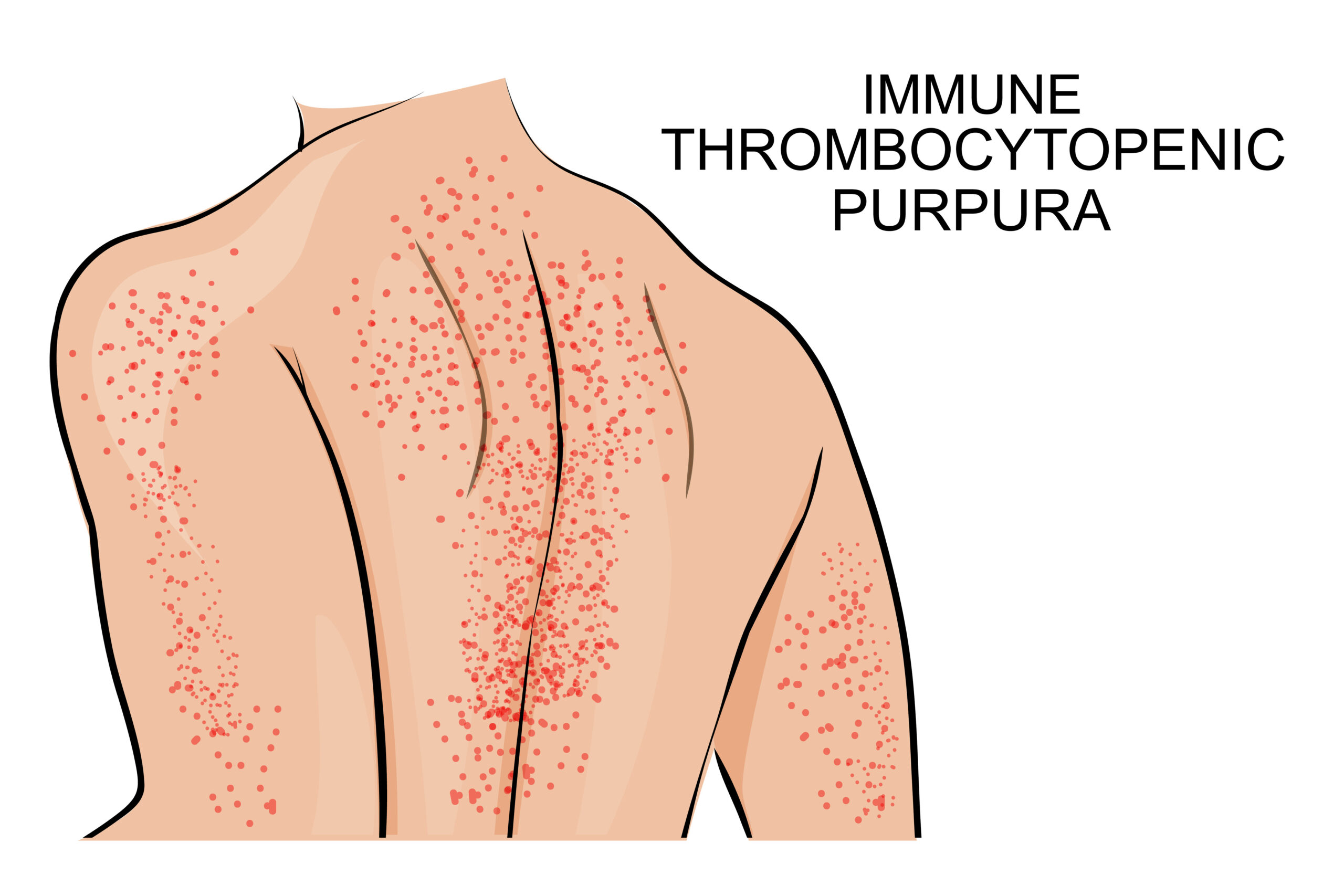

ITP is immune thrombocytopenia, a fairly common blood disorder. People with ITP have a lower than normal number of platelets in their blood. Platelets are blood cell fragments that clump together at the site of an injury to form a clot and help stop bleeding..
“Thrombocytes” is another word for platelets, and “penia” means “lack” or “deficiency.” So the term thrombocytopenia literally means “a deficiency of platelets.” ITP is “immune” because your immune system is stimulated to attack your own platelets by mistake, most often as a result of antibodies produced against them.
This immune system mistake may be due to medications that can cause an allergy that cross-reacts with your platelets. It can be due to infections that set off an immune reaction, commonly viral infections such as chickenpox, hepatitis C and AIDS. Pregnancy can cause the immune system to react, as can immune disorders such as rheumatoid arthritis and lupus. Low-grade lymphomas and leukemias may make abnormal antibodies that attack platelets.
In some case, the cause of ITP is not known. In the past, little was understood about the potential causes of ITP, so the condition was previously named idiopathic thrombocytopenia purpura. “Idiopathic” means “of unknown cause.” “Purpura” refers to the bruises or purplish areas that often appear on the skin of people with ITP.
There are two forms of ITP: acute and chronic. Acute ITP is more common in young children. It often appears after a viral infection such as chickenpox, which triggers the immune reaction that leads to ITP. Symptoms of acute ITP generally appear suddenly and last less than six months. In most cases, treatment is not needed for acute ITP, and it generally does not recur.
Chronic ITP can affect people of any age, but is more common in adults than children. Symptoms last six months or longer; they may last for your entire life. Chronic ITP can go away and recur many times. It requires ongoing treatment with a hematologist, or blood specialist. Women are two to three times more likely than men to develop chronic ITP.
Symptoms of ITP are associated with increased bleeding. They include purpura; tiny red dots under the skin, called petechiae, that look like a rash; spontaneous nosebleeds that are difficult to stop; bleeding from your gums; heavier than normal menstrual periods; prolonged bleeding from cuts; profuse bleeding during surgery; and blood in your urine or stool.
A serious complication of ITP is bleeding into your brain, which can be life threatening.
To diagnose ITP, your doctor will perform a complete physical exam and review of your medical history, including all the medications you take. The doctor will likely order blood tests to check your platelet count. These tests include a complete blood count (CBC) and a blood smear. A blood test to check for antibodies that attack platelets may also be ordered by your doctor.
If the blood tests indicate a low platelet count, your doctor may recommend more tests to confirm the diagnosis of ITP. These tests may include a bone marrow aspiration. Platelets are made by your bone marrow. An aspiration can reveal whether your bone marrow is making a sufficient number of platelets.
There is no cure for ITP. Treatment is based on your platelet count, your age, your general health and your symptoms. The goal of treatment is to increase your platelet count to a safe level, enabling you to live a normal life while you wait for your ITP to go into spontaneous or treatment-induced remission. ITP can recur, however, even after successful treatment.
Medications are generally the first line of treatment. A corticosteroid, such as prednisone, is commonly used to help increase your platelet count by reducing the rate of platelet destruction. Unfortunately, steroids have many side effects, including irritability, weight gain and high blood pressure, and can only be used for short periods.
Other medications may be used to treat ITP as well. These include rituximab, an antibody therapy that targets the immune cells that produce the proteins that attack platelets; intravenous immunoglobulin (IVIg), which increases platelet count by decreasing destruction of platelets by your spleen; and thrombopoietin receptor agonists, which help prevent bruising and bleeding by causing the bone marrow to produce more platelets.
If your ITP symptoms are severe and medication doesn’t improve your platelet count, your doctor may recommend a splenectomy, the surgical removal of your spleen. Your spleen, which is located in the upper left section of your abdomen, is responsible for the destruction of platelets that are coated with antibodies.
Severe or widespread cases of ITP require emergency treatment, which is typically a transfusion of concentrated platelets along with the IV administration of a corticosteroid.





Leave a Reply